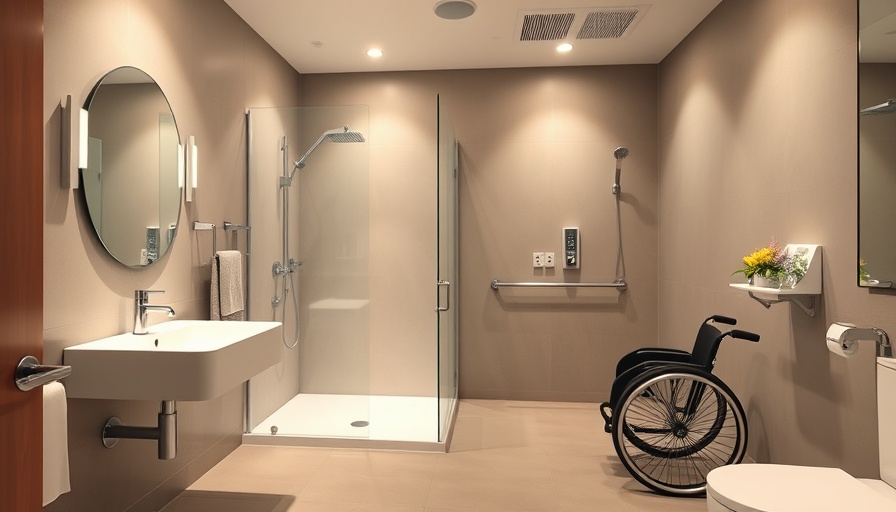
Understanding Why Accessible Bathrooms Matter
Bathrooms are fundamental areas in every home, yet they often fall short of meeting the needs of individuals with mobility challenges. Creating safe and accessible bathrooms for wheelchair users is more than just a design consideration; it’s essential for maintaining independence and dignity. With a significant portion of Ocean County's population comprising seniors and individuals with disabilities, the need for thoughtful accessibility is increasingly pressing. Enhancing bathroom access reflects a broader commitment to inclusivity, ensuring that all residents can enjoy the comforts of home without barriers.
Innovative Features Making a Difference
One of the cornerstones of creating wheelchair-friendly bathrooms is the integration of innovative design features. From roll-in showers to wall-mounted sinks, these solutions are tailored to support independence. Roll-in showers eliminate thresholds, allowing seamless access for wheelchair users, while grab bars enhance safety. These safety devices provide much-needed support during personal hygiene routines, preventing slips and falls—a real concern for those with reduced mobility.
Moreover, the choice of materials contributes significantly to both functionality and aesthetics. Utilizing durable, water-resistant materials like ceramic tiles and engineered stones not only ensures longevity but also enhances the overall look of the bathroom. Additionally, bright and even lighting can transform the space, making it safer and more inviting.
The Role of Fixtures in Accessibility
Choosing the right fixtures is crucial in creating a safe bathroom environment. Comfort-height toilets, which are higher than standard models, facilitate transfers for wheelchair users, reducing strain and simplifying the experience. Similarly, faucets equipped with sensor technology or lever handles minimize the physical effort required to operate them, enhancing independence.
Furthermore, custom fixtures can reflect personal style while also catering to specific needs. Homeowners have a vast range of options to choose from that combines functionality with elegance, thus ensuring that safety does not compromise personal taste.
Future Trends in Bathroom Accessibility
As awareness around accessibility grows, the bathroom industry is evolving to meet the needs of a diverse population. Future trends are likely to focus on smart technology integration, where voice control can manage lighting and water flow, creating even greater ease for seniors and individuals with disabilities.
Moreover, designers are prioritizing aesthetic appeal alongside accessibility. The shift toward incorporating eco-friendly materials and sustainable practices is notable as more homeowners aim for both functionality and environmental responsibility.
Common Misconceptions About Accessibility Solutions
Many people assume that accessible bathroom solutions compromise style or are only necessary for facilities serving aging populations. However, modern design trends demonstrate that accessibility and elegance can coexist. Homeowners can achieve a chic look while implementing essential safety features. Misunderstandings surrounding accessibility often lead to resistance against necessary modifications, but educating homeowners on the benefits and potential designs can drive acceptance.
Practical Insights for Homeowners and Design Professionals
For homeowners considering modifications, starting with a thorough assessment of their specific needs is vital. Engaging a design professional who specializes in accessibility can provide tailored insights that transform bathrooms into safe spaces. Additionally, incorporating input from wheelchair users can ensure that designs truly meet their needs, fostering a sense of community and belonging.
Moreover, sharing success stories from those who have made these changes can motivate others. Real-life examples underscore the significant improvements in quality of life that accessible designs can bring.
Call to Action: Embrace Accessibility in Your Home
Creating a bathroom that is both safe and aesthetically pleasing for wheelchair users is an achievable goal. As you consider upgrades or bathroom renovations, prioritize accessibility features that promote independence. Take the first step today—reach out to local contractors or design professionals specializing in accessible solutions, and transform your bathroom into a welcoming space for everyone.
 Add Row
Add Row  Add
Add 




Write A Comment